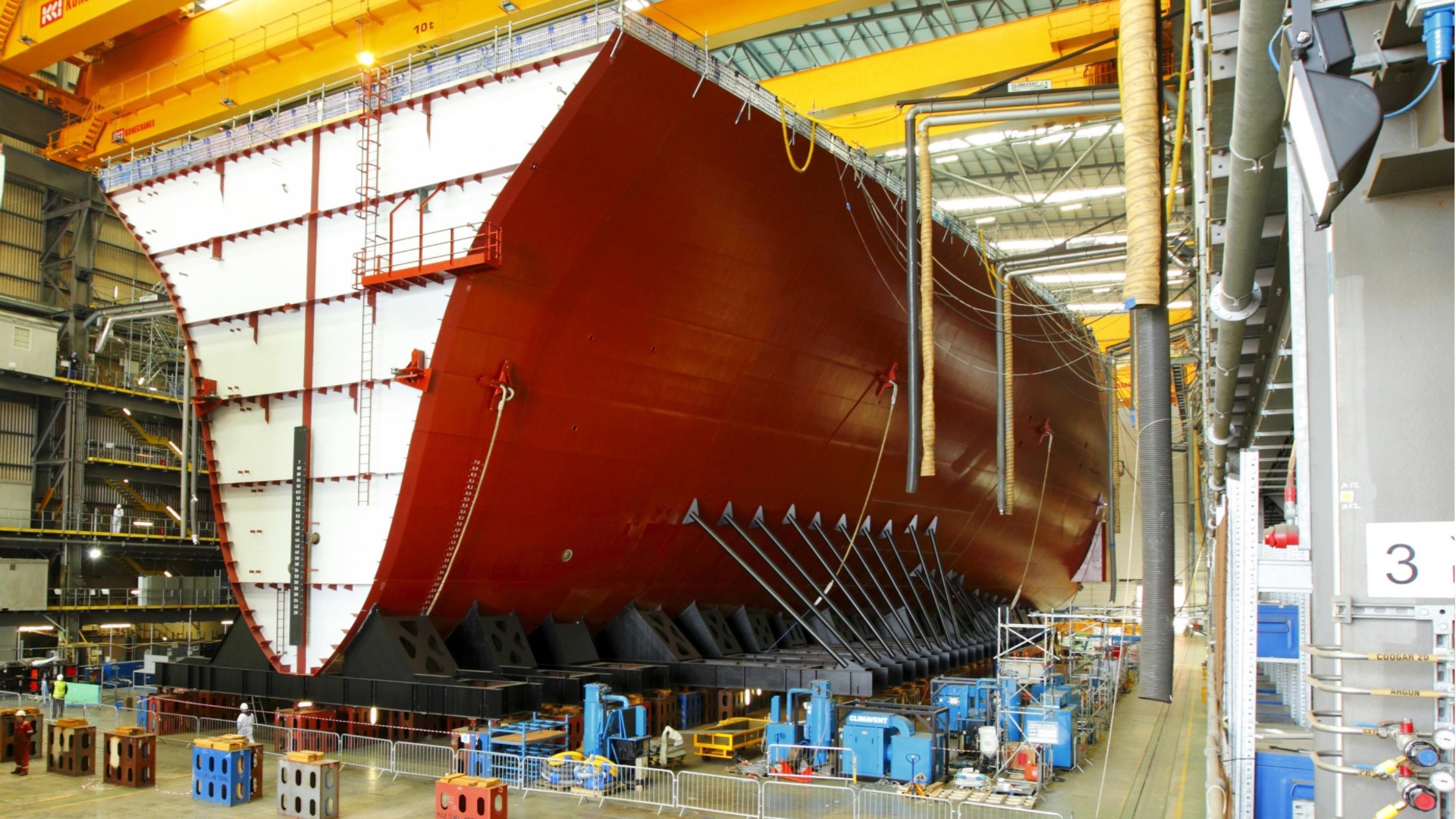Aircraft/Avionics Mechanics & Techs
Aircraft/Avionics Mechanics & Techs
Career Overview
Aircraft and Avionics Equipment Mechanics and Technicians repair and perform scheduled maintenance on aircraft.
Education
Aircraft Mechanics and Service Technicians typically enter the occupation after attending a Part 147 FAA-approved aviation maintenance technician school. These schools award a certificate of completion that the FAA recognizes as an alternative to the experience requirements stated in regulations. The schools also grant holders the right to take the relevant FAA exams.
Future Outlook
Overall employment of Aircraft and Avionics Equipment Mechanics and Technicians is projected to grow 5 percent from 2019 to 2029, faster than the average for all occupations. Employment growth will vary by occupation.
Work Environment
Aircraft and Avionics Equipment Mechanics and Technicians work in hangars, in repair stations, or on airfields. The environment can be loud because of aircraft engines and equipment.
Recommended High School Courses
- Electronics
- Computer Science
- Communication
- Trade-related courses
- Automotive Repair
- Active Learning - Understanding the implications of new information for both current and future problem-solving and decision-making.
- Active Listening - Giving full attention to what other people are saying, taking time to understand the points being made, asking questions as appropriate, and not interrupting at inappropriate times.
- Complex Problem Solving - Identifying complex problems and reviewing related information to develop and evaluate options and implement solutions.
- Coordination - Adjusting actions in relation to others' actions.
- Critical Thinking - Using logic and reasoning to identify the strengths and weaknesses of alternative solutions, conclusions or approaches to problems.
- Equipment Maintenance - Performing routine maintenance on equipment and determining when and what kind of maintenance is needed.
- Equipment Selection - Determining the kind of tools and equipment needed to do a job.
- Instructing - Teaching others how to do something.
- Judgment and Decision Making - Considering the relative costs and benefits of potential actions to choose the most appropriate one.
- Monitoring - Monitoring/Assessing performance of yourself, other individuals, or organizations to make improvements or take corrective action.
- Operation and Control - Controlling operations of equipment or systems.
- Operation Monitoring - Watching gauges, dials, or other indicators to make sure a machine is working properly.
- Quality Control Analysis - Conducting tests and inspections of products, services, or processes to evaluate quality or performance.
- Reading Comprehension - Understanding written sentences and paragraphs in work related documents.
- Repairing - Repairing machines or systems using the needed tools.
- Service Orientation - Actively looking for ways to help people.
- Social Perceptiveness - Being aware of others' reactions and understanding why they react as they do.
- Speaking - Talking to others to convey information effectively.
- Systems Analysis - Determining how a system should work and how changes in conditions, operations, and the environment will affect outcomes.
- Systems Evaluation - Identifying measures or indicators of system performance and the actions needed to improve or correct performance, relative to the goals of the system.
- Time Management - Managing one's own time and the time of others.
- Troubleshooting - Determining causes of operating errors and deciding what to do about it.
- Customer and Personal Service - Knowledge of principles and processes for providing customer and personal services. This includes customer needs assessment, meeting quality standards for services, and evaluation of customer satisfaction.
- Engineering and Technology - Knowledge of the practical application of engineering science and technology. This includes applying principles, techniques, procedures, and equipment to the design and production of various goods and services.
- English Language - Knowledge of the structure and content of the English language including the meaning and spelling of words, rules of composition, and grammar.
- Mathematics - Knowledge of arithmetic, algebra, geometry, calculus, statistics, and their applications.
- Mechanical - Knowledge of machines and tools, including their designs, uses, repair, and maintenance.
- Public Safety and Security - Knowledge of relevant equipment, policies, procedures, and strategies to promote effective local, state, or national security operations for the protection of people, data, property, and institutions.
- Arm-Hand Steadiness - The ability to keep your hand and arm steady while moving your arm or while holding your arm and hand in one position.
- Auditory Attention - The ability to focus on a single source of sound in the presence of other distracting sounds.
- Category Flexibility - The ability to generate or use different sets of rules for combining or grouping things in different ways.
- Control Precision - The ability to quickly and repeatedly adjust the controls of a machine or a vehicle to exact positions.
- Deductive Reasoning - The ability to apply general rules to specific problems to produce answers that make sense.
- Extent Flexibility - The ability to bend, stretch, twist, or reach with your body, arms, and/or legs.
- Finger Dexterity - The ability to make precisely coordinated movements of the fingers of one or both hands to grasp, manipulate, or assemble very small objects.
- Flexibility of Closure - The ability to identify or detect a known pattern (a figure, object, word, or sound) that is hidden in other distracting material.
- Hearing Sensitivity - The ability to detect or tell the differences between sounds that vary in pitch and loudness.
- Inductive Reasoning - The ability to combine pieces of information to form general rules or conclusions (includes finding a relationship among seemingly unrelated events).
- Information Ordering - The ability to arrange things or actions in a certain order or pattern according to a specific rule or set of rules (e.g., patterns of numbers, letters, words, pictures, mathematical operations).
- Manual Dexterity - The ability to quickly move your hand, your hand together with your arm, or your two hands to grasp, manipulate, or assemble objects.
- Multilimb Coordination - The ability to coordinate two or more limbs (for example, two arms, two legs, or one leg and one arm) while sitting, standing, or lying down. It does not involve performing the activities while the whole body is in motion.
- Near Vision - The ability to see details at close range (within a few feet of the observer).
- Oral Comprehension - The ability to listen to and understand information and ideas presented through spoken words and sentences.
- Oral Expression - The ability to communicate information and ideas in speaking so others will understand.
- Perceptual Speed - The ability to quickly and accurately compare similarities and differences among sets of letters, numbers, objects, pictures, or patterns. The things to be compared may be presented at the same time or one after the other. This ability also includes comparing a presented object with a remembered object.
- Problem Sensitivity - The ability to tell when something is wrong or is likely to go wrong. It does not involve solving the problem, only recognizing there is a problem.
- Reaction Time - The ability to quickly respond (with the hand, finger, or foot) to a signal (sound, light, picture) when it appears.
- Selective Attention - The ability to concentrate on a task over a period of time without being distracted.
- Speech Clarity - The ability to speak clearly so others can understand you.
- Speech Recognition - The ability to identify and understand the speech of another person.
- Visual Color Discrimination - The ability to match or detect differences between colors, including shades of color and brightness.
- Visualization - The ability to imagine how something will look after it is moved around or when its parts are moved or rearranged.
- Written Comprehension - The ability to read and understand information and ideas presented in writing.
- Written Expression - The ability to communicate information and ideas in writing so others will understand.
- Inspect mechanical components of vehicles to identify problems.
- Interpret blueprints, specifications, or diagrams to inform installation, development or operation activities.
- Inspect completed work to ensure proper functioning.
- Maintain repair or maintenance records.
- Read technical information needed to perform maintenance or repairs.
- Inspect structural components of vehicles to identify problems.
- Operate cranes, hoists, or other moving or lifting equipment.
- Repair worn, damaged, or defective mechanical parts.
- Test fluids to identify contamination or other problems.
- Read work orders or descriptions of problems to determine repairs or modifications needed.
- Replace worn, damaged, or defective mechanical parts.
- Disassemble equipment to inspect for deficiencies.
- Test mechanical equipment to ensure proper functioning.
- Apply protective coverings to objects or surfaces near work areas.
- Inspect mechanical equipment to locate damage, defects, or wear.
- Assemble electrical components, subsystems, or systems.
- Install electrical components, equipment, or systems.
- Install piping for installation or maintenance activities.
- Move large objects using heavy equipment.
- Fabricate parts or components.
- Lay out work according to specifications.
- Clean equipment, parts, or tools to repair or maintain them in good working order.
- Service vehicles to maintain functionality.
- Lubricate equipment to allow proper functioning.
- Reassemble equipment after repair.
- Cut materials according to specifications or needs.
- Remove parts or components from equipment.
- Align equipment or machinery.
- Drill holes in parts, equipment, or materials.
- Install machine or equipment replacement parts.
- Troubleshoot equipment or systems operation problems.
- Observe equipment in operation to detect potential problems.
- Maintain inventories of materials, equipment, or products.
- Order materials, supplies, or equipment.
- Communicate with coworkers to coordinate installations or repairs.
- Paint surfaces or equipment.
Potential Scholarships
Approx Salary Expectation
Related Careers
References
Trend Analysis - Explorer the Market, Labour Market Information, Government of Canada https://www.jobbank.gc.ca/trend-analysis.
O*NET OnLine, National Center for O*NET Development, https://www.onetonline.org/.



